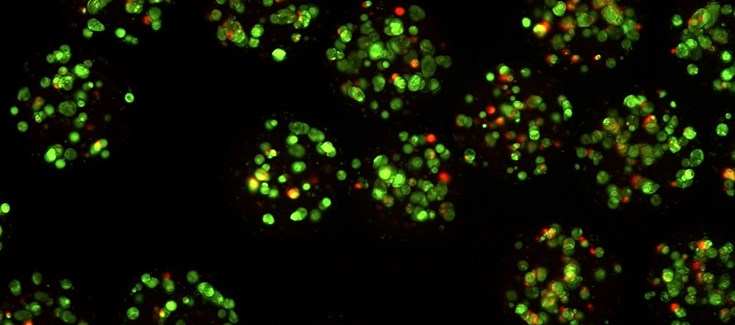NANBIOSIS Unit 10 of Drug Formulation participates in the European Project Position II
Nanobiocel, the CIBER-BNN – UPV-EHU group, led by José Luis Pedraz, Scientific Director of NANBIOSIS-ICTS U10 “Drug Formulation Unit” participates in the Position II European project, coordinated by Philips Electronics Nederland.
The project, funded through the Horizon 2020 call with a global budget of more than 50 million euros, will be developed during three years with the participation of 48 partners. Its general objective is to innovate in the production processes in the field of health to obtain state-of-the-art catheters. It will also include innovative treatments, such as cell therapy, which guide small capsules with cells with a regenerative effect to stimulate the recovery of damaged cardiac areas during the infarction.
The Nanobiocel group will be responsible for carrying out the formulation of the cells in hydrogels, for administration through the catheter at the cardiac level, for the regeneration of heart tissue.
In the development of the project, NANBIOSIS U10 “Drug Formulation Unit ” will participate. This Unit, located in the Faculty of Pharmacy of the UPV / EHU, has the capacity to design and evaluate classic dosage forms and new forms of biotechnological drugs, DNA, RNA and vaccines, using different methodologies based on micro and nanomedicine. This last methodology, based on the microencapsulation of cells, peptides, proteins and, in general, of biotechnological products, as well as the development and design of non-viral vectors for gene therapy, is one of the greatest singularities of this unit. It has the most advanced equipment for micro and nanoencapsulation.
The Eurpean project under Grant Agreement Ecsel-783132- POSOTION II 2017-IA, seeks to reverse the nowadays obsolete production of catheters (in the last decade there have been no innovations in this field). This justifies, from a business point, the investment in new R & D lines. In addition, it will introduce open technology platforms to increase miniaturization, the integration of electronics, wireless communications and their encapsulation. These technology platforms will renew catheter-based interventions, improving performance and reducing current production costs. It also seeks to break the current monopoly of US companies in the development and production of smart catheters.










